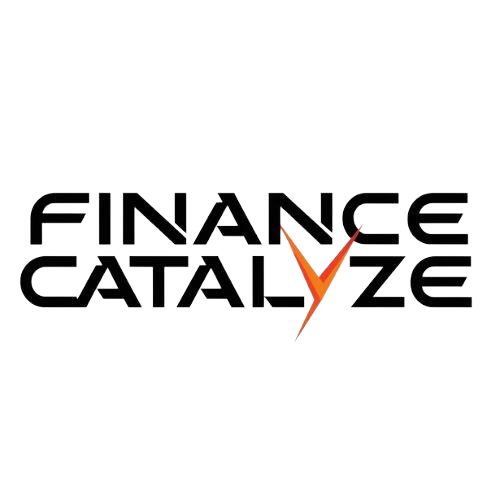Imagine a thriving business, its wheels spinning seamlessly until one day, the poor cash flow dries up. Suddenly, vendors go unpaid, growth opportunities are missed, and the once-promising venture finds itself drowning in a sea of debt. This nightmarish scenario is all too common for companies that neglect the critical practice of cash flow management.
Like oxygen for the human body cash flow is the lifeblood that keeps a business alive and thriving. Neglecting its proper management can have devastating consequences that ripple through every aspect of operations.
In this article, we’ll delve into the harsh realities of poor cash flow management and equip you with proactive strategies to steer your business towards financial stability and growth.
The Harsh Realities of Neglecting Cash Flow
Delayed Vendor Payments and Strained Relationships
When cash flow issues arise, one of the first casualties is the ability to pay suppliers on time. This situation can quickly escalate into a vicious cycle, where delayed payments strain relationships with vendors, leading to diminished service quality or even a complete supply cutoff.
Consider the plight of a small manufacturing company that found itself in a cash crunch. As payments to their primary raw material supplier became increasingly late, the supplier began prioritizing other clients, resulting in delays and lower-quality materials. This, in turn, impacted the company’s production quality and ability to fulfill orders, further exacerbating their cash flow problems.
Missed Growth Opportunities and Stunted Expansion
In the dynamic world of business opportunities for growth and expansion often present themselves unexpectedly. Without sufficient cash reserves, companies may be forced to watch these opportunities slip through their fingers.
A prime example is the case of a promising tech startup that had developed a groundbreaking product. Just as they were poised to launch and capture a significant market share, they found themselves cash-strapped and unable to fund the necessary marketing and production efforts.
Their competitors, with healthier poor cash flows, seized the opportunity, leaving the once-promising startup struggling to catch up.
The Debt Trap: Relying on Expensive Financing

When cash flow issues become chronic, businesses may resort to taking out loans or relying on credit lines to cover expenses. While these options provide temporary relief, they often come with high-interest rates and fees, adding to the company’s financial burden.
According to a study by the National Federation of Independent Business (NFIB), small businesses that relied heavily on costly financing options were more likely to experience financial distress and even bankruptcy. One such business, a local restaurant, found itself trapped in a cycle of taking out new loans to pay off old ones, with interest payments consuming an ever-increasing portion of their revenue.
Also read this:
Employee Morale and Retention Nightmares
Beyond the financial implications, a cash flow crisis can also take a toll on a company’s most valuable asset: its employees. Delayed salary payments or the constant threat of layoffs can quickly erode morale and motivation.
As one disgruntled employee of a struggling retail chain lamented, “It’s demoralizing to constantly worry about whether you’ll be paid on time or even have a job next month. The stress and uncertainty make it hard to focus on our work.”
Low morale often leads to decreased productivity, high turnover, and the loss of top talent, further compounding a business’s challenges.
The Ultimate Nightmare: Insolvency and Bankruptcy
In the most severe cases, persistent cash flow problems can push a business towards the ultimate nightmare: insolvency and bankruptcy. Like a ship taking on water, a company facing chronic cash shortages may find itself unable to stay afloat, leaving stakeholders, employees, and customers adrift in the aftermath.
The cautionary tale of a once-thriving construction company serves as a stark reminder. Despite a strong order book and a reputation for quality work, their failure to manage cash flow effectively led to a downward spiral. Unpaid subcontractors walked off job sites, creditors filed lawsuits, and eventually, the company was forced to declare bankruptcy, leaving a trail of financial devastation in its wake.
Proactive Strategies for poor Cash Flow Mastery
Identifying Cash Flow Issues Early
The key to avoiding cash flow catastrophes lies in early detection and proactive management. By regularly analyzing financial statements monitoring accounts receivable and payable and utilizing cash flow projections businesses can identify potential issues before they spiral out of control.
One effective approach is to implement a cash flow dashboard that provides real-time visibility into incoming and outgoing funds. This allows business owners and financial managers to spot trends and take corrective action promptly.
Optimizing Cash In flows and Outflows

Once poor cash flow issues are identified, businesses can implement strategies to optimize both cash inflows and outflows:
Cash Inflows
- Streamline billing and invoicing processes to reduce delays in customer payments.
- Offer incentives for early payments, such as discounts or loyalty rewards.
- Explore accounts receivable financing or factoring options to unlock cash tied up in outstanding invoices.
Cash Outflows
- Negotiate more favorable terms with vendors, such as extended payment periods or bulk discounts.
- Conduct a thorough review of expenses and eliminate unnecessary costs.
- Prioritize essential expenditures and defer non-critical spending during cash flow crunches.
Related Post
Leveraging Technology for Cash Flow Optimization
In today’s digital age, businesses have access to powerful tools that can streamline cash flow management processes and provide valuable insights:
Accounting Software and Cloud-Based Solutions
Modern accounting software automates tasks like invoicing, payment tracking, and financial reporting, reducing manual effort and increasing accuracy. Cloud-based solutions enable real-time collaboration and access from anywhere, ideal for remote teams.
Cash Flow Forecasting Models
Sophisticated cash flow forecasting models leverage historical data and predictive analytics to project future cash flow scenarios under various conditions. This empowers businesses to plan for potential challenges and opportunities proactively.
Working Capital Management Techniques
Optimizing working capital involves striking the right balance between accounts receivable accounts payable, and inventory levels. Techniques like just-in-time inventory management and aggressive collection of outstanding invoices can free up cash that would otherwise be tied up in the working capital cycle.
Seizing Growth Opportunities of Poor Cash Flow

While poor cash flow management can stifle growth, mastering cash flow can provide a significant competitive advantage. Companies with robust cash reserves and healthy cash flows are better positioned to capitalize on growth opportunities as they arise.
Take the example of a successful retail chain that saw an opportunity to expand into a new market. Thanks to their disciplined cash flow management practices, they had sufficient funds to invest in new store locations, marketing campaigns, and inventory without straining their financial resources.
Building Resilience and Weathering Economic Storms
To facilitate growth effective cash flow management also fortifies a business against economic downturns and market fluctuations. Companies with strong cash positions and well-managed cash flows can weather storms that might sink their cash-strapped competitors.
During the Great Recession of 2008-2009 many businesses struggled to survive but those that had prioritized cash flow management were better equipped to navigate the turbulent waters. One such company, a manufacturing firm was able to leverage its strong cash reserves to acquire struggling competitors at bargain prices emerging from the recession stronger than ever.
Frequently Asked Questions
What are some signs that my business may be facing cash flow problems?
Some common red flags that indicate potential poor cash flow issues include:
- Consistently delayed payments to vendors or employees
- Increasing reliance on credit lines or loans to cover expenses
- Difficulty paying bills on time or bounced checks
- Declining cash balances and diminishing cash reserves
- Significant gaps between accounts receivable and accounts payable
If you notice several of these signs it is crucial to analyze your poor cash flow statements and projections immediately to identify the root causes and take corrective action.
How can I improve my accounts receivable process to boost cash inflows?
Optimizing your accounts receivable process can significantly improve cash inflows. Here are some effective strategies:
- Implement clear payment terms and policies for customers
- Send invoices promptly and follow up on overdue payments consistently
- Offer incentives like discounts for early payments
- Consider accepting multiple payment methods (credit cards, online payments, etc.) for customer convenience
- Explore accounts receivable financing or factoring options to accelerate cash collection
Conducting regular aging reports on outstanding invoices can help you identify and address collection issues proactively.
What role can technology play in improving cash flow management?
Technology plays a crucial role in streamlining cash flow management processes and providing valuable insights. Some key tools and technologies include:
- Cloud-based accounting software for real-time financial tracking and collaboration
- Automated invoicing and payment processing tools to reduce manual effort
- Cash flow forecasting and budgeting software for predictive analytics
- Enterprise Resource Planning (ERP) systems for integrated management of financials, inventory, and operations
- Mobile apps and online portals for remote access and monitoring of cash flows
Leveraging these technologies can improve efficiency, accuracy, and decision-making capabilities related to cash flow management.
How can I build up cash reserves to weather economic downturns or seize growth opportunities?
Building up cash reserves is essential for long-term financial stability and agility. Here are some strategies to consider:
- Set aside a portion of profits or revenue as a cash reserve fund
- Regularly review and reduce unnecessary expenses
- Negotiate better terms with vendors and suppliers
- Implement stricter inventory management practices
- Consider alternative financing options like equity financing or crowdfunding
It is also important to have a clear plan for how and when to utilize your cash reserves such as for emergency situations strategic investments or capitalizing on growth opportunities.
Conclusion
Poor cash flow management can devastate a business. It leads to delayed payments to vendors, strained relationships and potential supply disruptions. Growth opportunities get missed as there is no cash to invest in new products, expansion or acquisitions. The business may rely too much on expensive loans and debt.
Employee morale suffers from late paychecks. In the worst cases, the company risks bankruptcy and shutting down.The solution is proactive cash flow management. Regularly review financial statements and cash flow projections to identify issues early. Optimize billing processes and negotiate better vendor terms to improve cash inflow.
Cut unnecessary expenses and leverage technology tools for visibility and forecasting. Build cash reserves during good times to prepare for downturns. Mastering cash flow gives a competitive edge the ability to fund growth storms and maintain a financially healthy business

Haarrii, a seasoned finance expert with 4 years of hands-on experience, brings insightful analysis and expert commentary to our platform. With a keen eye for market trends and a passion for empowering readers, Haarrii delivers actionable insights for financial success.







